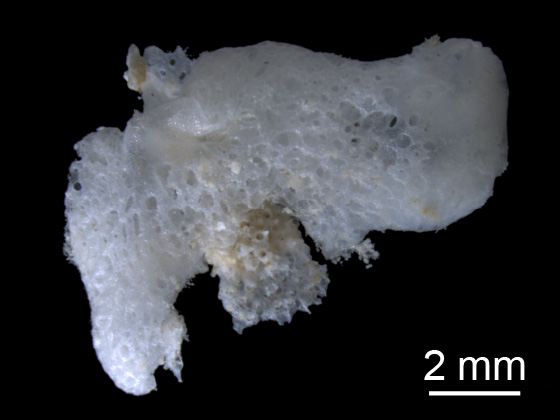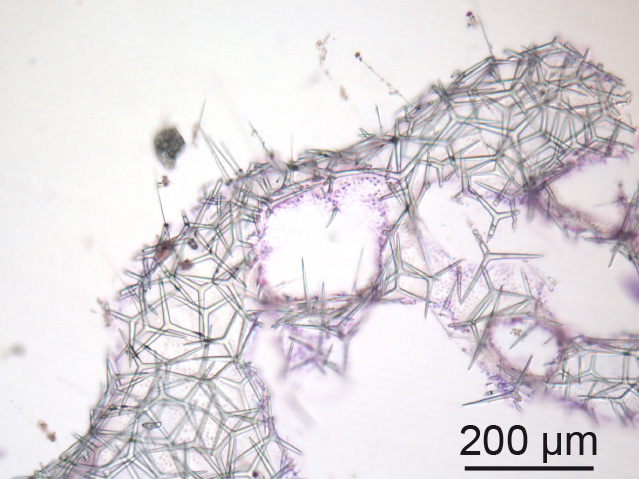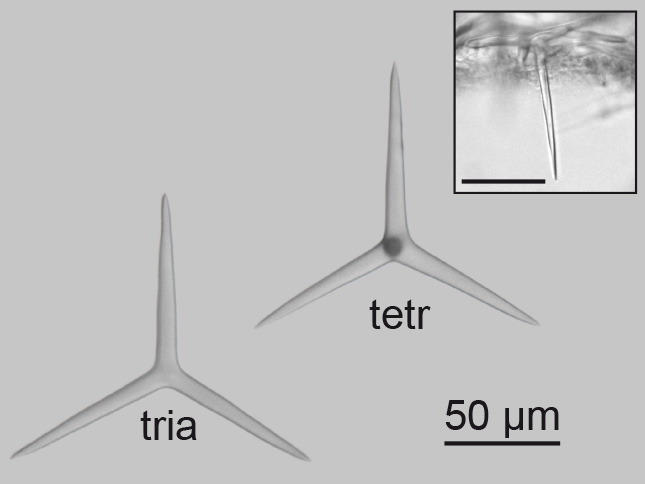Morphological description (show/hide)
| Flat, cushion-shaped cormus (ca. 10 mm x 5 mm) of tightly anastomosed tubes, which are ca. 200-300 ?m in diameter,and combine to larger tubes ending with the several osculae. Osculae are about 1.4 mm in diameter. The spaces between the tubes have a round shape and are usually between 100 - 400 ?m in diameter. | | white | | white | | Triactines and the basal triradiate system of tetractines support the tube walls; the apical actines of tetractines protrude into the lumen of the tubes. Triactines are more frequent than tetractines. Trichoxeas occur on the outer tubes, arranged perpendicular to the tube and protruding the sponge walls. Tripods, if present must be very similar to triactines with their center only being slightly out of the planes of the actine tips. We could not with any certainty distinguish them from planar triactines. | | Not differentiated | | Triactines: Equiradiate triactines with conical actines and sharp tips. Tripods cannot be unambiguously distinguished from them. 48 - 79.6 - 106 ?m x 7 - 10.0 - 13 ?m (n=50). Tetractines: With a basal system of similar size and shape as the triactines. The apical actine is also conical and about as long as the actines of the basal actines, and smooth. Spines on apical actines were not detected. Actines of the basal system: 60 - 68.5 - 79 ?m x 7 - 9.0 - 11 ?m (n=9); apical actines of tetractines: 46 - 68.6 - 98 ?m x 5 - 6.9 - 8 ?m (n=8). Trichoxeas: Very thin, their length is 108 -141.4 -169 (n=7). |
|





